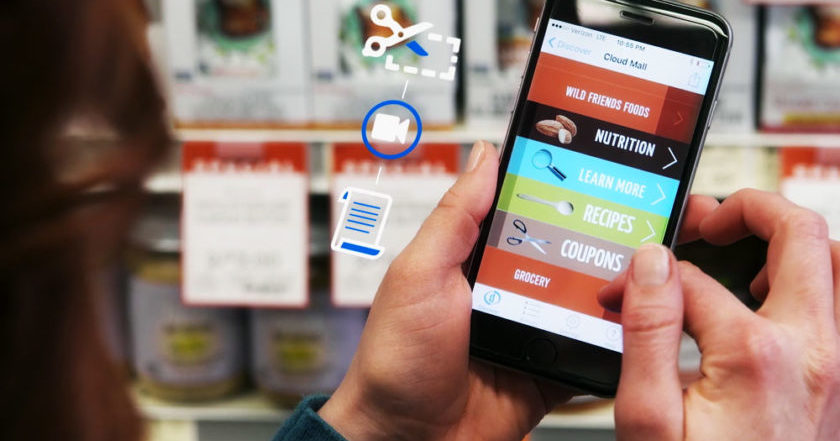HITS

Digimarc CFO: Company’s ‘Priorities’ for Second Half Include Boosting Barcode Bookings
Story Highlights
Topping the list of Digimarc’s “priorities” for the back half of 2018 is working to expand deployment of Digimarc Barcode across more customers, according to Charles Beck, the company’s CFO.
“We’ve got a lot of work to do in the second half of the year,” he said Sept. 6 at the Liolios Gateway Conference in San Francisco. “We’re really intently focused on getting [current] accounts closed and moving them to greater scale” across their companies, he said.
Launching Digimarc Barcode for Thermal Labels is “important to that strategy,” he said, adding: “Right now, we’re more in kind of pilot phase and we need to move to full rollout of Labels.”
While introducing Thermal Labels early this year, Digimarc pointed out that they scan even when ripped, creased, smudged or damaged, making retail checkout faster and easier for both customers and cashiers. Thermal Labels additionally encode GS1 Application Identifiers (AIs) for fresh foods, allowing retailers to dynamically adjust pricing on soon-to-be-expired fresh foods or sell items at a discount, instead of discarding them as shrink.
Digimarc will continue collaborating with its major customers, Beck said Sept. 6, adding: “We think that ultimately they’ll influence the industry to move towards adopting our technology.”
The company will continue to focus on the U.S., where most of its investment remains, but it also has small teams in Germany and Japan and continues to see opportunities in those markets, he also said.
“We’ve got an enormous market opportunity” thanks to the huge addressable market that exists, he said, noting: “There’s hundreds of millions of UPC codes out there that we’re trying to replace, which results in quite an enormous marketing opportunity for us.”
Digimarc has a “sustainable competitive advantage with a 20-year operating history in high security” and has “proven proprietary algorithms and … 1,100 patents behind us,” he also said.
But the expansion of its technology across more of its current retail customers’ stores hasn’t happened overnight. “We are trying to transform the supply chain and that take time,” Beck said, adding: “We’ve been at this for about four years now. I think the investment community may feel like we’re moving slow [but in] the retail and brand community [it] feels like we’re moving really fast. That’s because the UPC code’s been around for 40-plus years. It has very mature business processes within the supply chain and we’re trying to make some changes there. The barcode works. We just think we’ve got a much more reliable and efficient means of identification to ultimately supplement and then ultimately replace the barcode.”
Digimarc is “working hard in the industry to kind of prove ourselves and making good progress,” he told attendees.
Its strategy remains targeting “top-tier accounts” and Digimarc is “working with two of the top 10 global retailers in the world right now and negotiating with a third,” he said. On the consumer packaged goods (CPG) front, meanwhile, it’s working with a top 10 company and negotiating with another top 10 CPG company, he said.
Asked how long it will take to deploy its technology across, as an example, all the stores of U.S. supermarket chain Wegmans, he said it depended on how fast the retailer wanted to go and it can be deployed throughout all their stores quickly. Wegmans is “going to go at whatever pace they want,” he said.
There are, meanwhile, “a lot of other external factors that are kind of helping push the supply chain into the need of better auto identification,” including “what Amazon’s doing,” he said, adding the latter was “putting some pressure on the retailers to continue to innovate and find ways to be more efficient and more reliable in how they track things and process things in their supply chain.”
He didn’t get into details on Amazon’s initiative. But, in Digimarc’s recent earnings call for its second quarter (ended June 30), CEO Bruce Davis noted that the new Amazon Go grocery stores are using artificial intelligence and smart shelf technologies to do away with the need for traditional store checkouts altogether.
Digimarc Barcode technology includes the same information as a traditional UPC code, but “we can also include proprietary data” including more digits and “serialization” for “track and trace and anticounterfeiting-type solutions,” Beck noted Sept. 6.
But Digimarc Barcode is “very economical” for customers, he said, noting “we charge a small” fee of $50 per year, per UPC code. The charge for Thermal Label is done on a fixed fee per month per store, he said, adding Digimarc also offers an option to pay an annual enterprise license-fixed price per year for access to the entire Digimarc network.
Digimarc is also licensing its technology, he said, calling that a “high margin” business for the company that reduces the capital it needs. The company is “working with really all the key players in Thermal Labels as well as scanning,” he also said. Meanwhile, “on the mobile discovery side, we’re integrated [into the] Walmart and Shazam apps,” he pointed out.









